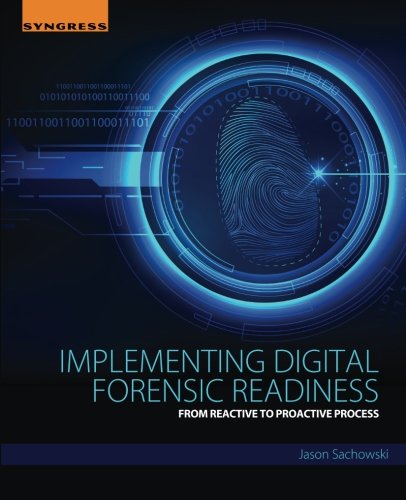

Most ebook files are in PDF format, so you can easily read them using various software such as Foxit Reader or directly on the Google Chrome browser.
Some ebook files are released by publishers in other formats such as .awz, .mobi, .epub, .fb2, etc. You may need to install specific software to read these formats on mobile/PC, such as Calibre.
Please read the tutorial at this link. https://ebooknice.com/page/post?id=faq
We offer FREE conversion to the popular formats you request; however, this may take some time. Therefore, right after payment, please email us, and we will try to provide the service as quickly as possible.
For some exceptional file formats or broken links (if any), please refrain from opening any disputes. Instead, email us first, and we will try to assist within a maximum of 6 hours.
EbookNice Team

Status:
Available4.8
23 reviewsImplementing Digital Forensic Readiness: From Reactive to Proactive Process shows information security and digital forensic professionals how to increase operational efficiencies by implementing a pro-active approach to digital forensics throughout their organization. It demonstrates how digital forensics aligns strategically within an organization’s business operations and information security’s program. This book illustrates how the proper collection, preservation, and presentation of digital evidence is essential for reducing potential business impact as a result of digital crimes, disputes, and incidents. It also explains how every stage in the digital evidence lifecycle impacts the integrity of data, and how to properly manage digital evidence throughout the entire investigation. Using a digital forensic readiness approach and preparedness as a business goal, the administrative, technical, and physical elements included throughout this book will enhance the relevance and credibility of digital evidence. Learn how to document the available systems and logs as potential digital evidence sources, how gap analysis can be used where digital evidence is not sufficient, and the importance of monitoring data sources in a timely manner. This book offers standard operating procedures to document how an evidence-based presentation should be made, featuring legal resources for reviewing digital evidence.